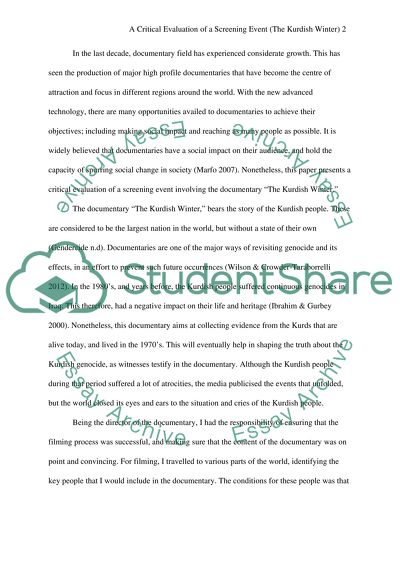Cite this document
(“A Critical Evaluation of a Screening Event (The Kurdish Winter) Essay”, n.d.)
Retrieved from https://studentshare.org/visual-arts-film-studies/1637657-a-critical-evaluation-of-a-screening-event-the-kurdish-winter
Retrieved from https://studentshare.org/visual-arts-film-studies/1637657-a-critical-evaluation-of-a-screening-event-the-kurdish-winter
(A Critical Evaluation of a Screening Event (The Kurdish Winter) Essay)
https://studentshare.org/visual-arts-film-studies/1637657-a-critical-evaluation-of-a-screening-event-the-kurdish-winter.
https://studentshare.org/visual-arts-film-studies/1637657-a-critical-evaluation-of-a-screening-event-the-kurdish-winter.
“A Critical Evaluation of a Screening Event (The Kurdish Winter) Essay”, n.d. https://studentshare.org/visual-arts-film-studies/1637657-a-critical-evaluation-of-a-screening-event-the-kurdish-winter.


